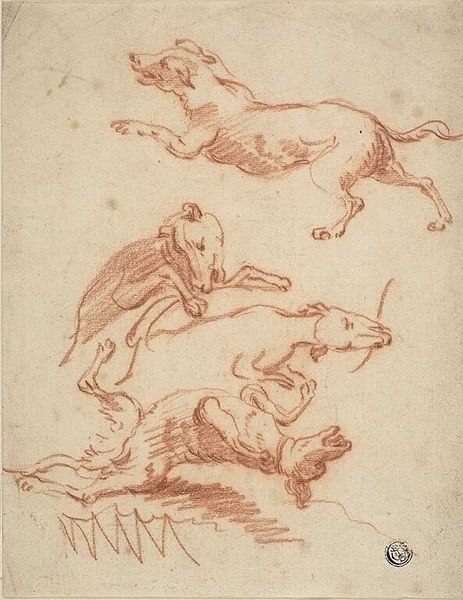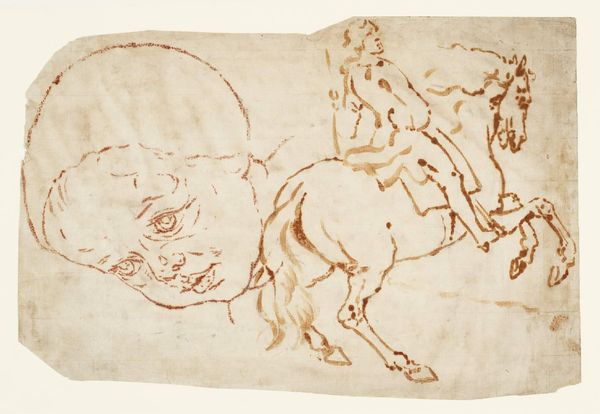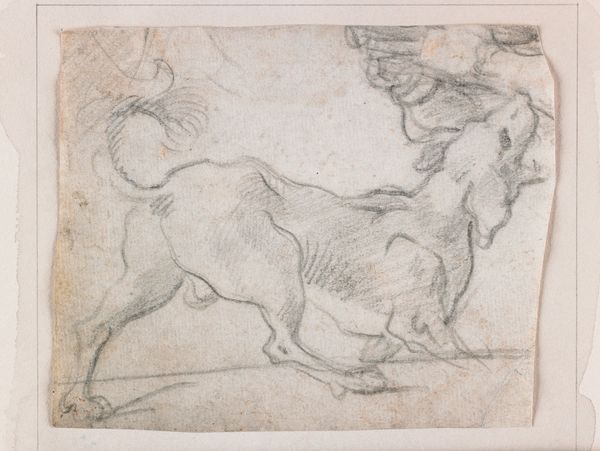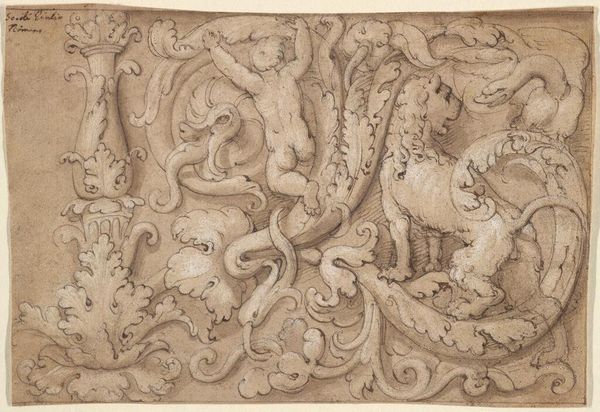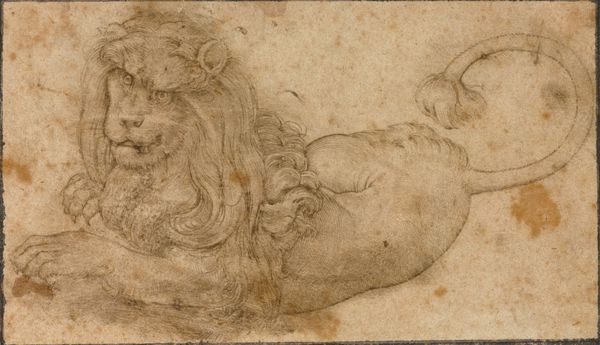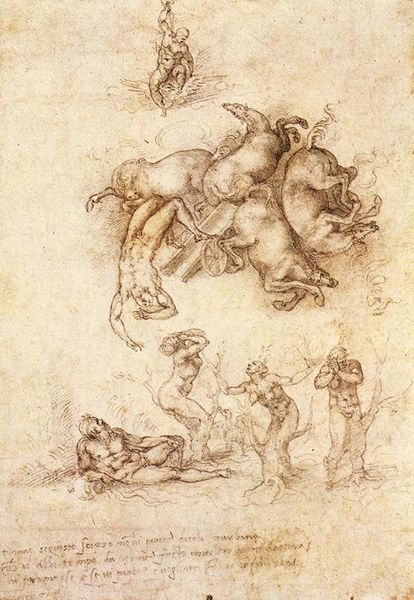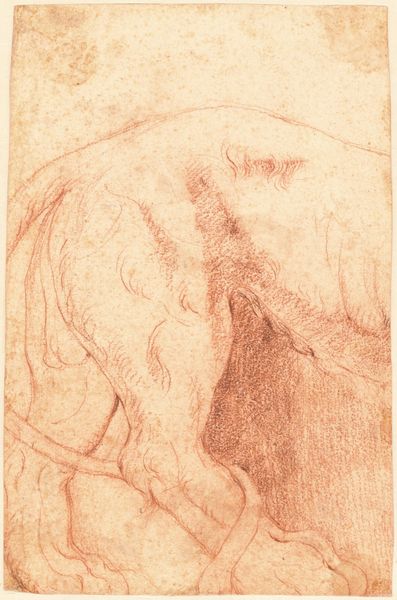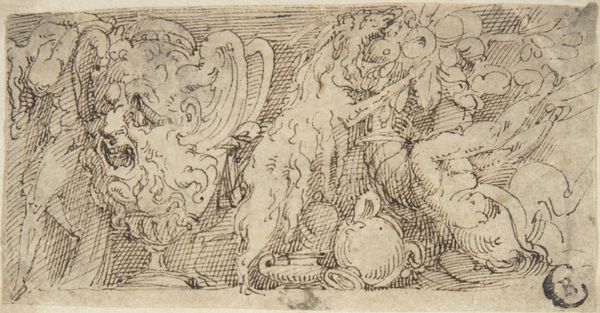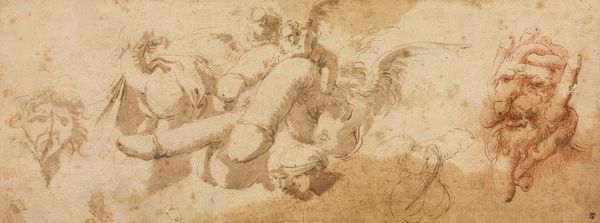
#
toned paper
#
rough brush stroke
#
pencil sketch
#
charcoal drawing
#
possibly oil pastel
#
charcoal art
#
fluid art
#
underpainting
#
sketch
#
horse
#
men
#
charcoal
#
watercolor
Copyright: Public domain
Editor: This is Leonardo da Vinci's "Study of a Rider," from 1504. It looks like it’s rendered in charcoal on toned paper. The energy in the sketch is amazing; you can almost feel the horse leaping forward! What stands out to you in this piece? Curator: Well, let's consider the function of studies like these in the Renaissance. Da Vinci wasn’t just capturing an image; he was dissecting the mechanics of movement, of power. He lived in a time of significant political and military upheaval, when powerful men— condottieri, dukes— were crucial for social mobility, so images like these were critical to legitimize them. Editor: So the horse isn't just a horse; it’s a symbol? Curator: Precisely. Think about the context: Florence, Milan... These city-states were locked in power struggles. Equine imagery becomes intrinsically linked to leadership and authority. How does that make you rethink the piece? Editor: It shifts the focus, it's less about the art itself and more about the person who may have seen the art. Like the ruling classes? Curator: Exactly! It was for patrons, other artists and, very importantly, for Da Vinci to improve and further investigate motion and proportion to enhance future commissions. Sketches like these were likely made in preparation for grander works. Editor: It’s like seeing the cogs of power turning, even in a simple sketch. Curator: And it reminds us that even seemingly simple studies reflect the complex social fabric of their time. Considering the historical function definitely reshapes how we interact with this piece.
Comments
No comments
Be the first to comment and join the conversation on the ultimate creative platform.
